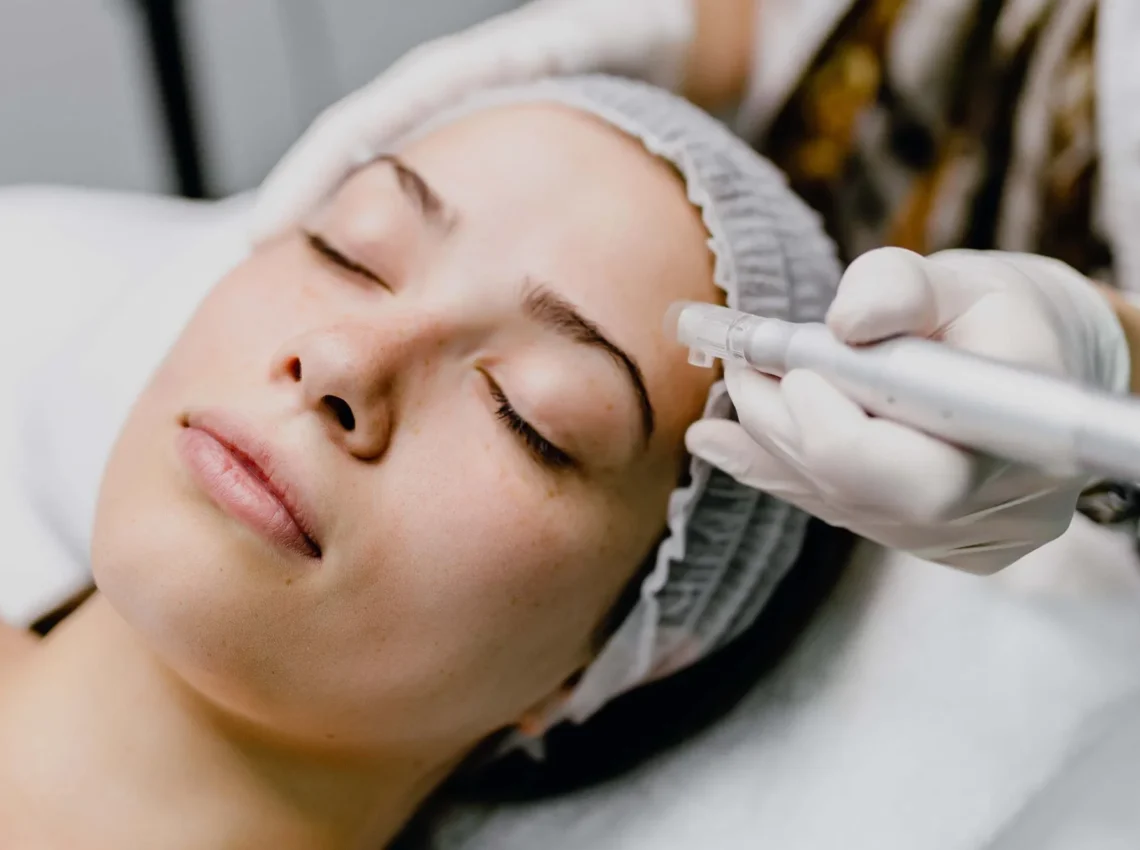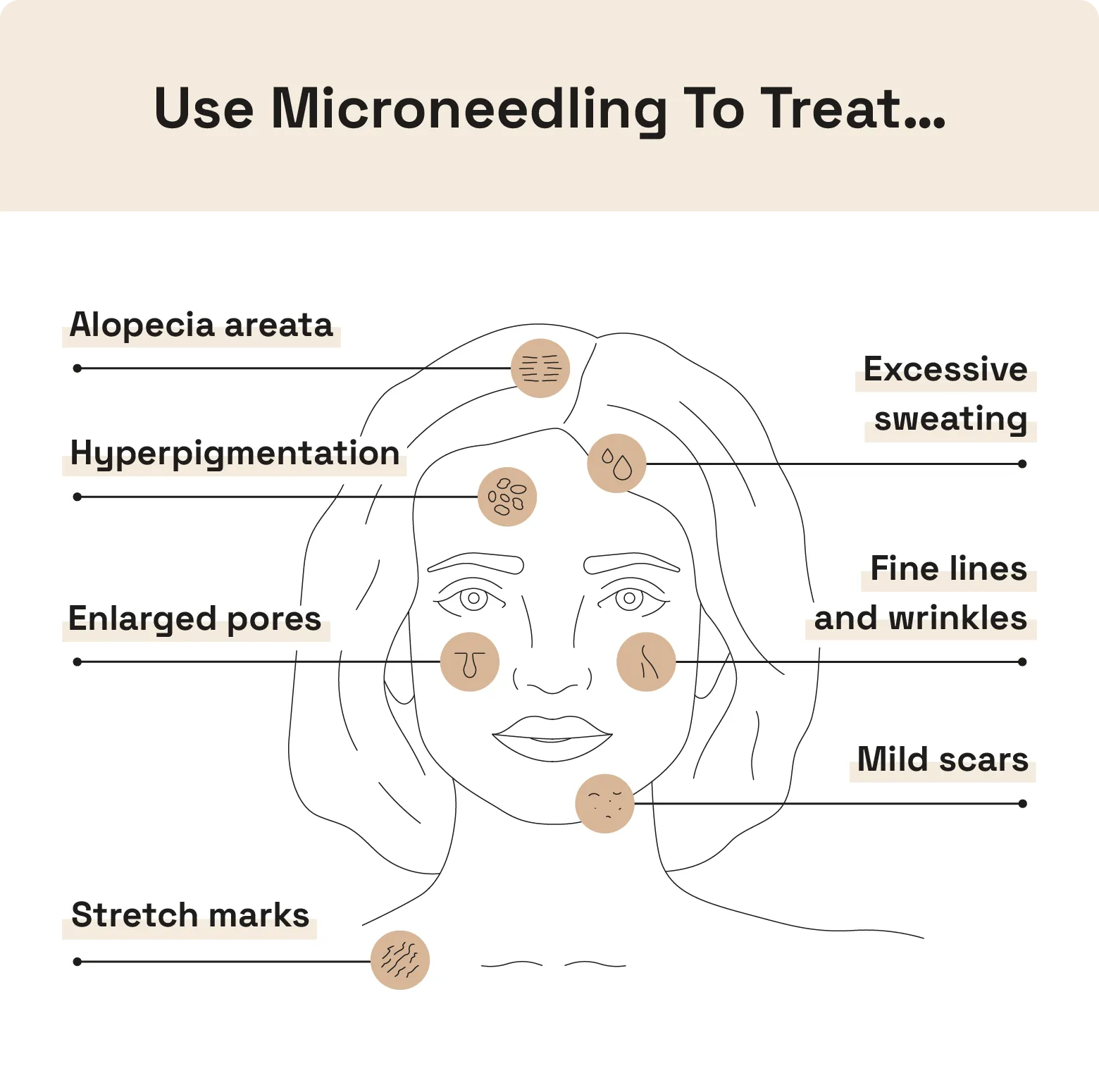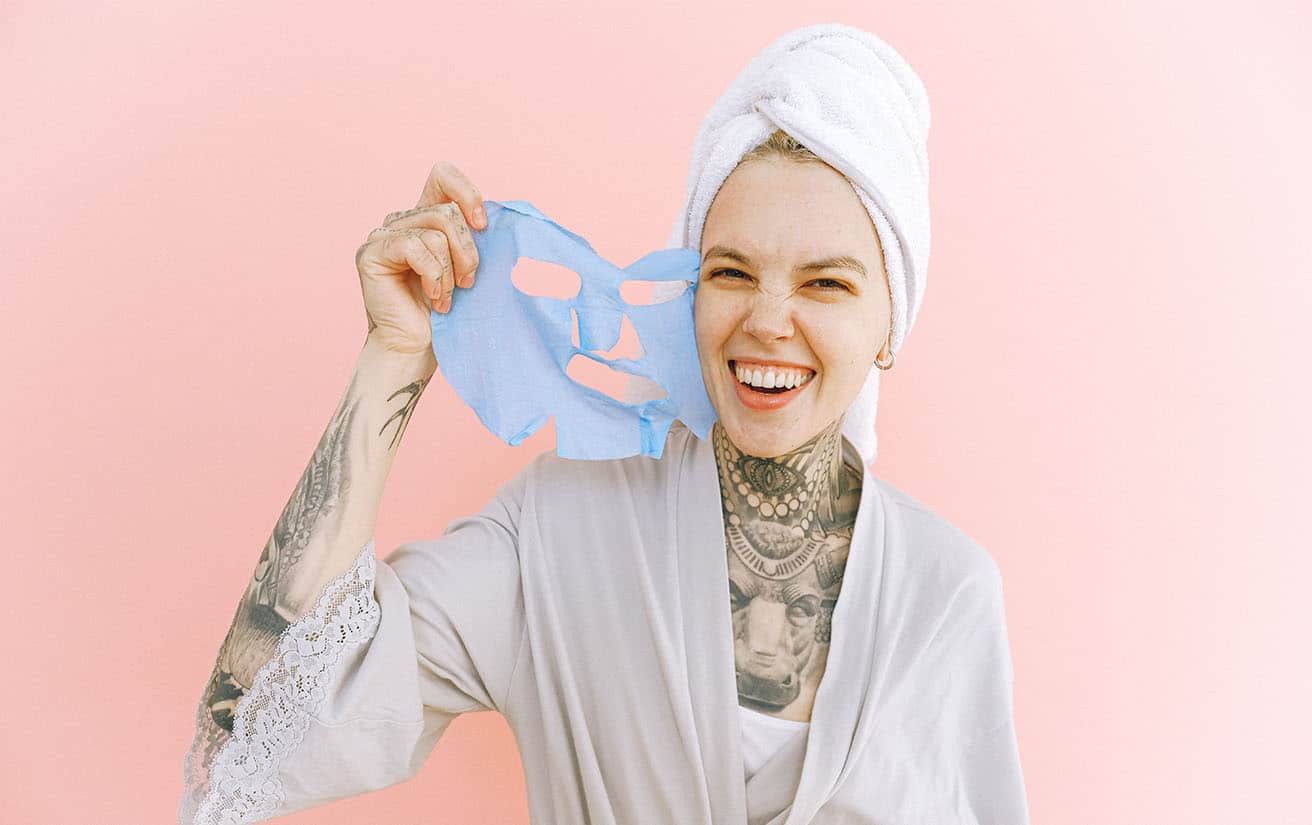How Much Is Microneedling and Is It Worth It?

Microneedling costs between $50 and $400 depending on the size of the treatment area, where you have the procedure done, who’s performing your treatment, and the equipment used.
You’ll likely need multiple treatments to see results, but for those struggling with hyperpigmentation or stubborn fine lines, this procedure could be the fast track to glowy, healthy-looking skin.
Microneedling is a minimally invasive cosmetic procedure that involves pricking the skin with tiny sterilized needles to promote collagen and elastin production. While creating microscopic wounds on your face may seem counterintuitive, this treatment can actually help heal and rejuvenate your skin.
We put together this handy guide to help you weigh the pros and cons before you book your appointment, covering everything from average price per state to preparation and aftercare.
How much does microneedling cost?
According to StyleSeat booking data, microneedling treatments are the most expensive in South Carolina, at an average of $393 per appointment. On the low end, Alabama’s average microneedling cost is just $54. You can see the average cost for each state in our system below:
| State | Average Appointment Cost |
|---|---|
| AL | $54* |
| AZ | $274 |
| CA | $134 |
| CO | $256 |
| CT | $150* |
| FL | $151 |
| GA | $259 |
| ID | $192 |
| IL | $365 |
| LA | $228 |
| MA | $231* |
| MI | $160* |
| MN | $175* |
| NC | $75 |
| NM | $325* |
| NV | $160* |
| NY | $96 |
| OH | $70* |
| OK | $166 |
| OR | $220* |
| SC | $393 |
| TN | $118 |
| TX | $214 |
| VA | $130* |
| WA | $174* |
*Prices based on less than 10 appointments
States not listed don’t have available data.
Factors affecting microneedling cost
The overall cost of your microneedling treatment will depend on your location, what areas you’d like treated, the type of microneedling treatment, and more. Check out this list to see what factors can influence the price of this type of facial:
- Location: Typically, areas with a high cost of living will see higher prices.
- Treatment provider: Microneedling treatments performed by an esthetician, medical assistant, or nurse will usually cost less than those performed by a dermatologist or surgeon.
- Number of treatments needed: Microneedling is not a one-time treatment. You’ll likely need multiple sessions to achieve the results you want and make them last.
- Size of the treatment area: While microneedling is most often done on the face, it can be performed on larger areas of the body to treat things like stretch marks. Of course, the larger the area, the more it’ll cost to treat.
- The type of treatment: There are a few types of microneedling procedures to choose from, such as RF microneedling treatments or vampire facials. Some treatments are more expensive than others, but worth looking into if you want more dramatic results faster.
- Optional add-ons: In addition to your microneedling treatment, your skin care provider may provide complimentary treatments or topicals to help with the healing process and boost the benefits. While these add-ons increase treatment costs, they can also prolong your results and reduce the total number of treatments you need.
Who should try microneedling?

If you’re seeking blemish-free skin with visible results in as little as a week, microneedling may be the answer. You should consider giving this treatment a try if you’re concerned about:
- Hyperpigmentation or uneven skin tone
- Stretch marks
- Enlarged pores
- Fine lines and wrinkles
- Mild scars, like acne scars or burns
Microneedling has also been shown to treat medical conditions like alopecia areata (hair loss due to an autoimmune disease) and hyperhidrosis (excessive sweating).
However, microneedling treatments aren’t for everyone. You may want to consider a skin care alternative if you identify with any of the following:
- Sensitive or allergic to topical anesthesia
- Have a clotting or bleeding disorder
- Take medication to thin your blood
- Have a condition that affects your skin, like eczema or psoriasis
- Have a weakened immune system
- Going through an active acne flare-up or are taking medications for acne
- Currently receiving radiation therapy or chemotherapy
- Have a tendency to form keloids (hard, raised scars)
There are many procedures available today that promise similar results to microneedling, such as microdermabrasion and chemical peels. Before you schedule your first microneedling appointment, have a consultation with your skin care provider to ensure this procedure is the best option to help you reach your skin goals.
Does microneedling hurt?
Perhaps the biggest deterrent for those considering microneedling is the perception that it’ll hurt — the name alone resonates more with medieval torture than a calming spa experience.
The general consensus is that microneedling procedures aren’t painful — but they can be uncomfortable.
Those who have experienced microneedling say they felt pressure and a scratching sensation during the procedure, and while it wasn’t painful, it also wasn’t exactly pleasant. Luckily, most sessions take only 30 to 60 minutes to complete, depending on the size of the area you’re treating.
Microneedling preparation
Microneedling is a minimally invasive treatment, but that doesn’t mean you won’t need to take special care of your skin before and after the procedure.
If you have an upcoming treatment scheduled, follow these pre-treatment instructions to ensure your appointment goes smoothly with minimal side effects:
Six months before:
- Stop taking Accutane to give your skin plenty of time to adjust.
Two weeks before:
- Avoid any unprotected sun exposure or IPL/laser procedures.
One week before:
- Stop using topicals or skin care tools that will increase skin sensitivity (retinoids, exfoliants, acids, etc.).
- Avoid blood thinning agents to keep bruising to a minimum.
Three days before:
- Do not take any anti-inflammatory medications that will interfere with your skin’s natural inflammatory process, like ibuprofen.
- Take a daily antiviral agent leading up to the appointment if you’re prone to cold sores.
One day before:
- Shave the treatment area if there’s dense hair present.
Arrive to your microneedling appointment clean-faced without makeup, moisturizer, or other topical products. After reviewing your medical history and prepping your skin for the procedure, your dermatologist or esthetician will gently press a sterile microneedling pen against your skin and work in a gliding motion until the entire treatment area has been covered.

Microneedling aftercare
The immediate results might appear as if you fell asleep on the beach a bit too long — your skin will be red and flushed, and you may experience some skin tightness and sensitivity. However, most of the redness and discomfort will subside within 24 hours. If you had the procedure done around your eyes, you may also experience micro-bruising lasting for three to four days (nothing a little concealer can’t fix).
To help with the healing process and ensure you’re getting the most out of your microneedling treatment, ask your skin care provider for a detailed post-treatment plan. In general, you’ll want to follow these instructions after your procedure.
Immediately after:
- Do not take any anti-inflammatory medications! Your skin’s natural inflammatory process is key to successful skin rejuvenation.
- Cleanse with a mild soap and use a gentle moisturizer — avoid scrubbing, rubbing, or using exfoliants for one week.
- Avoid activities that will cause your skin to heat up, like taking a hot shower or relaxing in a hot tub.
- Only use non-irritating, non-clogging skin care products the first week after treatment. (Tip: Use a daily vitamin C serum to help with healing and even skin tone!)
- Use sunscreen to prevent discoloration and sun damage while your skin is healing. You should use a daily sunscreen for at least three months after your treatment. (Or, better yet, just keep putting it on every day.)
24-48 hours after:
- Avoid exercise to minimize the risk of blistering.
Two days after:
- Apply a hydrating moisturizer to the treatment area to help with dryness and flakiness.
One to two weeks after:
- Slowly begin to reintroduce your toners, acids, and retinoids back into your skin care routine. If irritation occurs, stop use and give your skin more time to heal.
Most patients note their skin looks smoother and more radiant in as little as a week post-prick. If you’re concerned about your healing process or notice any pimples, blisters, or pigment changes, contact your treatment provider ASAP.
FAQ
Whether you believe microneedling is worth the cost will depend on how much you value the results. But for most people looking for a way to rejuvenate their skin without painful surgery or downtime, microneedling is one of the most cost-effective options available.
In general, microneedling results last for about three to five months, depending on how long new collagen lasts in your skin and the degree of your skin concerns. This means that younger people who can easily build new collagen will hold onto their results longer, while those who need to produce a lot of collagen to correct severe skin issues may need to schedule their next facial sooner.
Microneedling and microdermabrasion both treat similar skin concerns, with some key differences. Microneedling is a minimally invasive procedure that uses superfine needles to promote collagen production, while microdermabrasion is a noninvasive treatment that gently sands skin to reveal a smoother, brighter complexion.
Ready for a major skin glow-up? Browse local skin care professionals and start your journey toward a brighter, healthier complexion.


